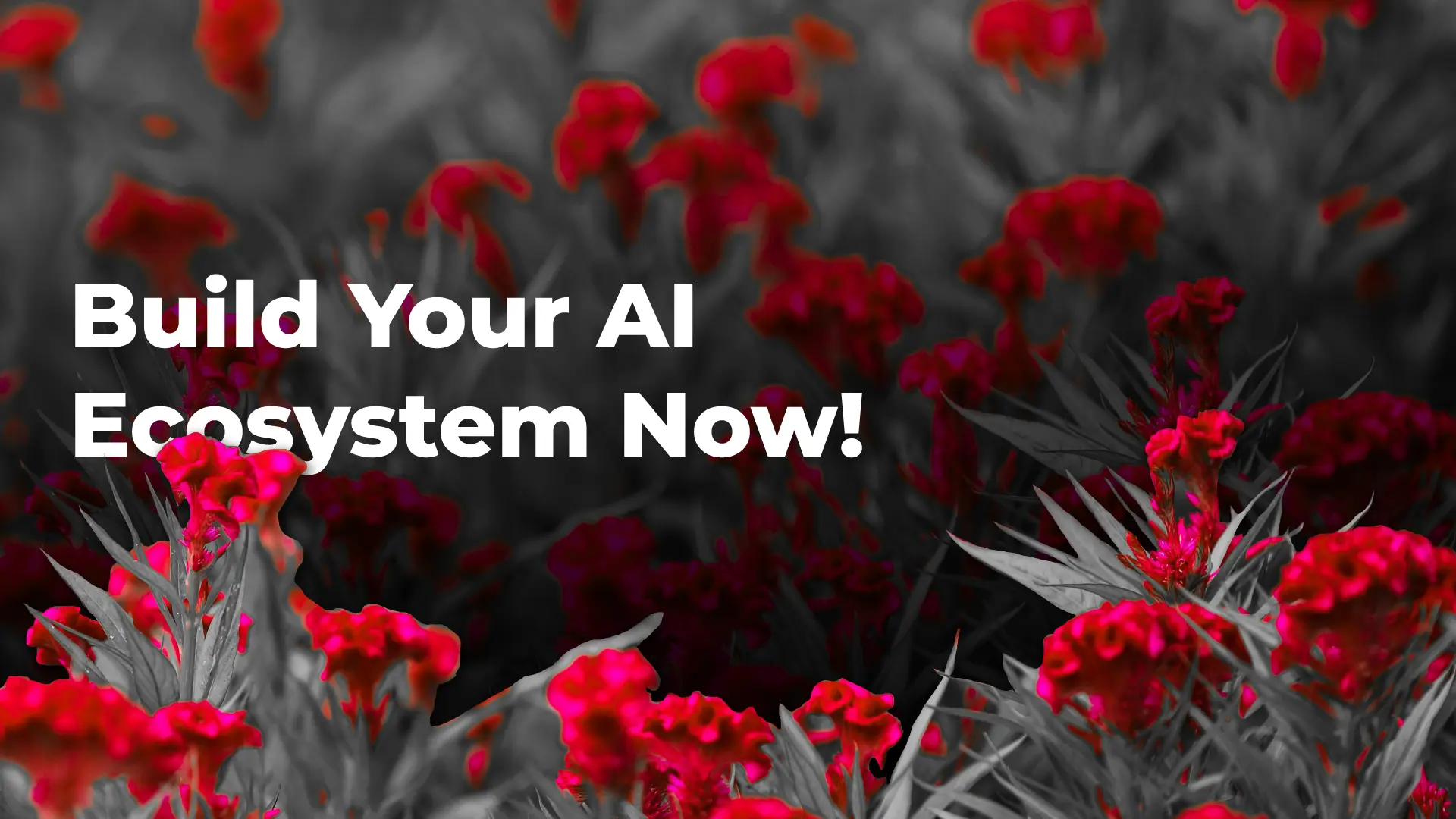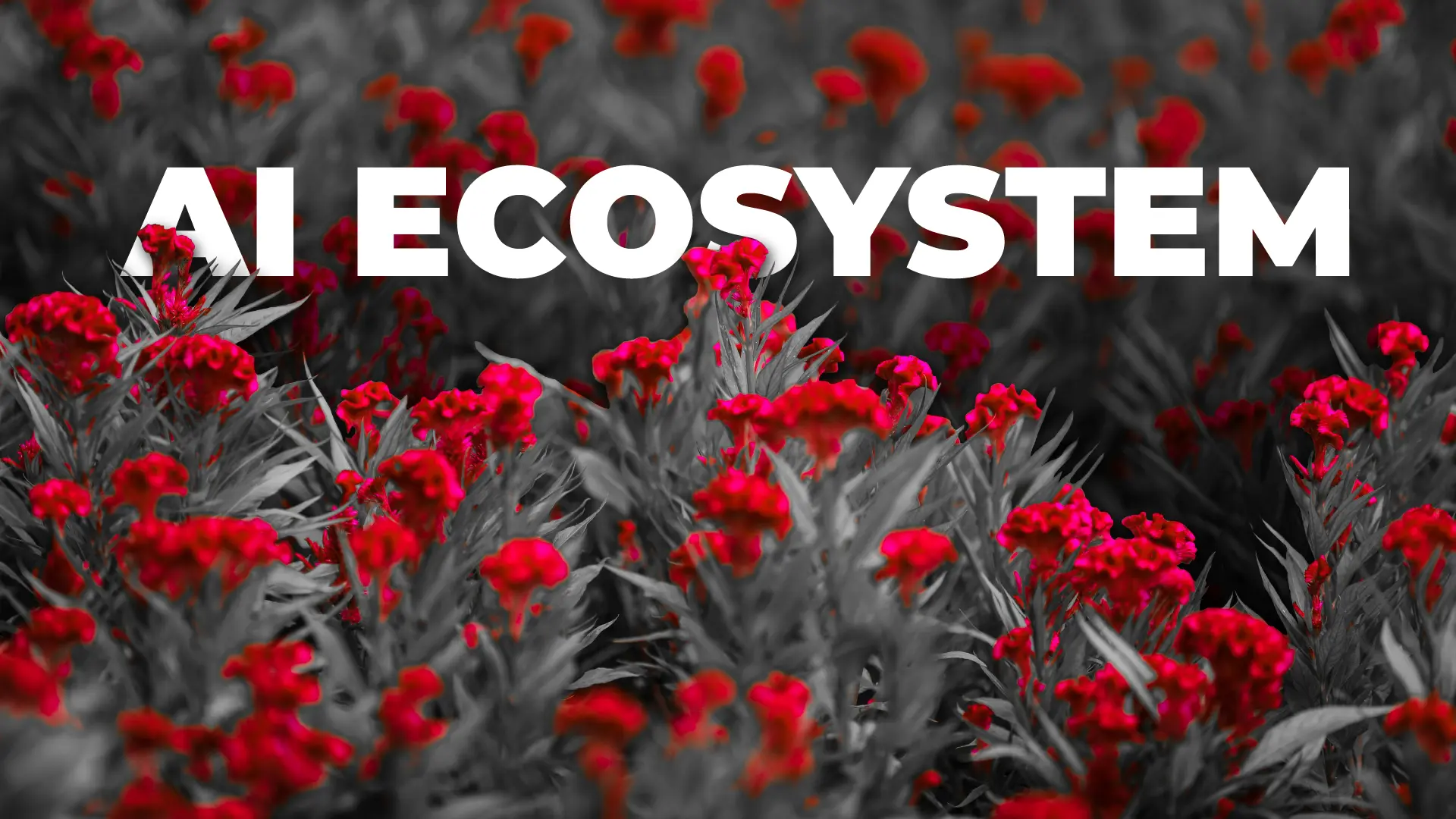Numerous processes and workflows occur within the AI ecosystem. To better understand it, let's draw an analogy between the AI ecosystem and a flower garden. This will help us grasp how this ecosystem is structured and how each component plays its role within AI.
Comparing the AI Ecosystem to a Flower Garden
When we look at a flower garden, we’re often captivated by its beauty. Yet, behind that beauty lies an ecosystem where every part has a crucial role, just like the components of the AI ecosystem.
Petals
Naturally, when discussing a flower garden, we start with the flower itself. Like an AI model, each flower may differ but has its own unique role and beauty. But have you ever noticed? When you hold a flower up to the light, you’ll see a network of veins spreading across its surface.
These visible pathways are essential for transporting nutrients to every part of the flower, allowing it to bloom fully. In the AI ecosystem, these veins are represented by neurons and data pathways within an AI model. These pathways transmit information and process data within the model, forming the foundation that enables AI to understand inputs and generate responses.
Leaves
Now, imagine the leaves surrounding the flower. Each one independently absorbs sunlight and performs photosynthesis, contributing to the overall health of the plant.
In the AI ecosystem, each leaf represents an AI model. These models work independently to perform specific tasks while being part of the broader AI process.
Branches
Branches connect and support the leaves and petals to the main stem, organize the results received from the central structure. In the AI ecosystem, branches symbolize platforms that bring together various AI tools to work in unison.
Main Stem
The main stem is the central structure that connects the roots to the branches, leaves, and flowers. It transports nutrients and provides stability.
In the AI ecosystem, the main stem represents the core infrastructure that supports all AI services, enabling AI models and tools to function effectively for users.
Roots
The roots spread into the soil to absorb water and anchor the plant firmly. In the AI ecosystem, roots symbolize the data sources and knowledge bases that feed information into AI models.
This includes datasets and databases that provide raw material as foundational knowledge for AI learning and decision making. Without quality "water" (data), the system cannot function optimally.
Soil
The soil is the medium that holds the roots and supplies essential nutrients for the flower to grow. In this analogy, the soil represents the computational resources and hardware that power AI systems such as servers, GPUs, and databases. Robust computing resources are vital for AI performance and development.
The Flower Garden
Having explored the detailed analogy of the AI ecosystem through a single flower, let’s zoom out to the entire flower garden! When observing a garden, we see various flowers coexisting to form a thriving ecosystem.
This garden represents the entire AI landscape, encompassing technologies, applications, and AI services, from chatbots and video analytics to facial recognition systems at entry gates.
Just as each flower contributes to the garden’s richness and diversity, every AI model and technology enhances the broader AI ecosystem. In a garden, flowers interact with one another and their environment. Similarly, in the AI ecosystem, different systems and services interact and collaborate through API integrations or platforms that allow AI models to work together. These collaborations enhance capabilities and lead innovative solutions.
The Gardener
Without the care of a gardener, a garden would struggle to grow and maintain its beauty. In this analogy, the gardener represents human innovation, creativity, and guidance in AI development. Human knowledge and expertise drive AI advancements.
Through insights, research, and ethical considerations, we ensure AI evolves in beneficial ways.
Seasons
Even though climate change and environmental conditions are an external factor, they significantly influence a garden’s growth. In the AI ecosystem, "seasons" represent laws, regulations, ethical standards, and public sentiment that govern AI’s use.
These external factors shape the conditions under which AI evolves, just as weather affects a garden’s growth.
Conclusion
Through this analogy, we see that the beauty of both a flower garden and the AI ecosystem lies in their diversity. Each model has a role and collaboration between components creates something greater and more innovative.

With Klik Digital Sinergi, we’re ready to help you plant and nurture your AI garden for your business!


RELATED POST
Infographic: Utilization of Sentiment Analysis for Social Media
Nov 28, 2025
Identify The Right Type of Sentiment Analysis for Your Business
Nov 05, 2025
Key Success Factors of Sentiment Analysis
Oct 23, 2025